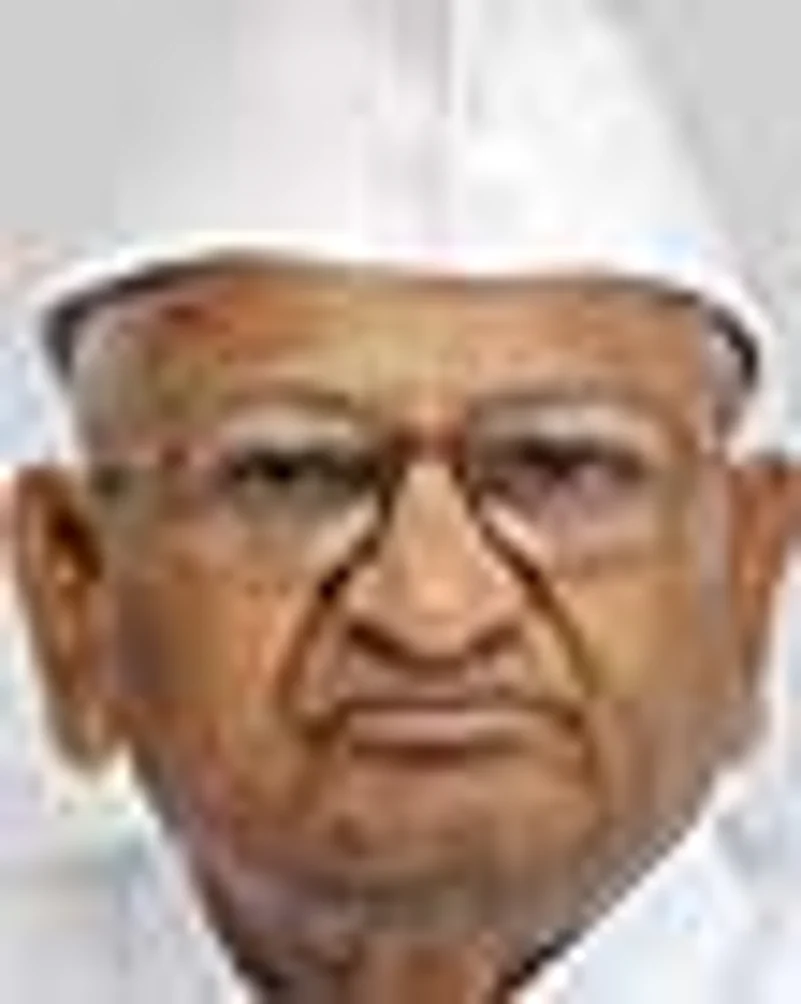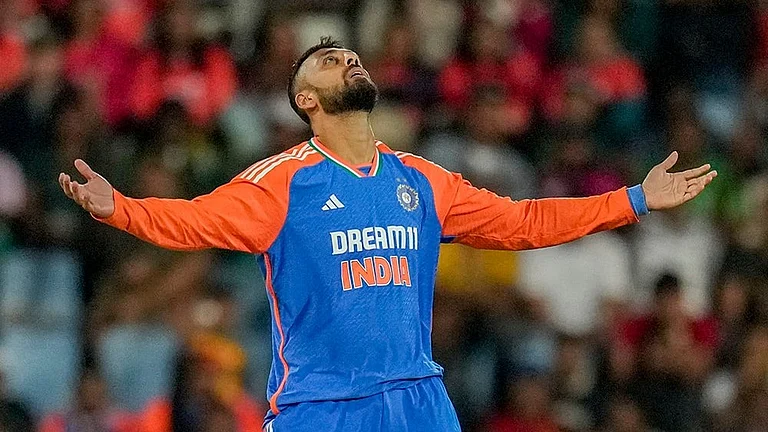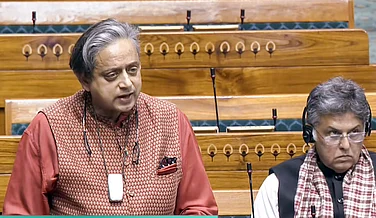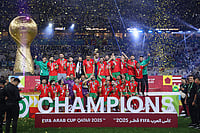9 Unanswered Questions
- A phone call about a ‘tweet’ is said to have alerted TV reporters on the defence beat to the beheading. Who tweeted?
- Indian journalists have documented beheadings of Pakistani soldiers at the hands of the Indian army in the past. Why the hysteria now?
- An Indian soldier was allegedly beheaded in 2011 when Gen V.K. Singh was in charge. Why did the then chief keep quiet?
- Northern Command made no mention of “beheading” on Jan 8. Why did the MoD do a turnaround four days later?
- If UPA could show restraint even after 26/11, why did it first stall and then suddenly succumb to the hysteria?
- Has Sushma Swaraj provided a scary preview of BJP’s worldview with her “10 heads for one head” statement?
- Were army chief Bikram Singh and air force chief N.A.K. Browne speaking on their own? Or were they airing the government’s view?
- Why did Congress support Shiv Sena’s decision to prevent Pakistani hockey players from joining practice in Mumbai?
- Who gains if the peace process goes off-track? Is it all linked to Pakistan’s internal politics and coming polls?
***
A Line Of Control Lost
Sequence of events following Hemraj’s decapitation

- Sunday, Jan 6 Indian troops open retaliatory fire at Pakistani position in Uri sector on the 772-km-long Line of Control; Pak soldier killed, another hurt
- Tuesday, Jan 8 Pak soldiers sneak across LoC at Mendhar, kill two Indian soldiers, injure a third. Reports of Lance Naik Hemraj's beheading sparks off major debate on TV channels.
- Wednesday, Jan 9 India summons Pak high commissioner Salman Bashir to South Block and lodges its strong protest at the Pakistani action. Islamabad denies the Indian charge.
- Jan 9 Pak offers to hold investigations through the UN military observer group
- Thursday, Jan 10 Indian foreign minister Salman Khurshid strongly criticises the Pakistani action but says the peace process between the two sides remains on track. One Pakistani soldier is reportedly killed in firing across LoC.
- Friday, Jan 11 More incidents of ceasefire violation and firing across the LoC reported
- Jan 11 Pak foreign minister Hina Rabbani Khar says, “Any statement coming from a billion people from India does not deserve a response from Pakistan.”
- Jan 11 Islamabad summons Indian envoy; also stops movement of buses and trucks across LoC.
- Saturday, Jan 12 Defence ministry corroborates Hemraj’s beheading and urges Pakistan to take strong action against the guilty soldiers
- Sunday, Jan 13 A Pak business delegation returns without taking part in the Gujarat business meet
- Monday, Jan 14 An Indo-Pak flag meet at brigadiers' level at Poonch fails to achieve any breakthrough
- Jan 14 Indian army chief Gen Bikram Singh meets press, says Indian forces will retaliate at a time and place of their choosing
- Tuesday, Jan 15 PM Manmohan Singh declares no "business as usual" with Pakistan till action is taken against the guilty
- Hina Rabbani Khar Says Indian remarks have pushed back bilateral relations a 20 years
- Hockey India League Sends nine Pakistani players home. Visa on arrival scheme put on hold on day of inauguration.
***
The hawks in the Indian establishment could well be patting themselves on the back. The tough message to Pakistan—carefully crafted through a 10-day-long media campaign, aided by fire-breathing TV news channels, social media groups, sundry politicians, senior military officials and key figures from the government—seemed to have seeped through. The recalcitrant neighbour, responsible for the beheading of an Indian soldier and sparking off the current tension along the Line of Control (LoC) with frequent violation of the agreed ceasefire, is showing all the signs of ‘having blinked’.
The spell of tension along the LoC that divides Kashmir, claimed by both countries, appears to be ebbing. After days of posturing, Islamabad is showing willingness to effect a climbdown, adopting a more reconciliatory approach and making efforts to de-escalate tension that had been rising since Lance Naik Hemraj of Rajputana Rifles was beheaded on January 8 by Pakistani troops who crossed over to the Indian side and walked away with his head. The incident had triggered a series of fire exchanges between both sides, resulting in more deaths.
Strong Indian protests notwithstanding, Pakistan had stuck to its ground—denying the involvement of its soldiers in the beheading. Instead, it accused India of inciting the flare-up with its frequent violation of the ceasefire line. A poker-faced Pakistani foreign minister Hina Rabbani Khar absolved its troops of any wrongdoing, and even ticked off the Indian side for a lack of poise. What’s more, she suggested the UN Military Observers’ Group do an independent inquiry. Fully aware of the fact that New Delhi has not recognised UNMOGIP since the 1950s—any mention of it is tantamount to “internationalising” the Kashmir issue, hence anathema—and would surely reject the call out of hand, this was a smart way to respond to truculence with a taunt.

Churonda village in Uri sector where a Pak soldier was killed. (Photograph by Waseem Andrabi)
From the time the beheading became known, the mood in India veered towards wanting to make Pakistan pay—belligerent TV debates and competitive tough talk by politicians kept fanning the flames. The near-buildup of a war hysteria and the resultant disquiet in the barracks forced the top brass of the armed forces, and then senior government figures, to issue a series of tough messages to Pakistan. It culminated on Tuesday, January 15, with Prime Minister Manmohan Singh warning Pakistan “it cannot be business as usual” unless it took urgent steps to punish those involved in the beheading.
The first signs of change in the neighbour’s attitude came when the directors general of military operations of the two countries met on Wednesday, January 16. An earlier meeting at the brigadier level between the two sides had failed to achieve any breakthrough as both India and Pakistan stuck to their stated position. However, when the DGMOs met, the Pakistani side assured the Indians that “strict orders had been given to the troops on the ground to observe the ceasefire strictly and exercise restraint”. Pakistan said it would make all efforts to de-escalate tension along the LoC. This was followed up almost immediately by foreign minister Hina Rabbani Khar’s offer to hold talks with her Indian counterpart, Salman Khurshid, to clear the air and address the concerns of each side sparked off by the hostilities instead of issuing “belligerent statements and ratcheting up tensions”.

| “Those responsible for this crime will have to be brought to book. It can’t be business as usual.” Manmohan Singh, Prime Minister of India |

| “If his (Hemraj’s) head cannot be brought back, we should get at least 10 heads from their side.” Sushma Swaraj. Opposition leader, Lok Sabha | ||

| “Local commanders have been asked to hit back at the place and timing of their choosing.” General Bikram Singh, Chief of Army Staff |

| “We should repeat the lesson we gave Pakistan in ’65. If they call me back, I’ll go and fight Pakistan.” Anna Hazare, Social activist | ||

| “The sacrifice of these martyrs will not have been in vain if we avenge this heinous deed.” Uddhav Thackeray, Shiv Sena leader |

| “Place all facts before the international community so that Pakistan can be named and shamed.” Arun Jaitley, Opposition leader in RS | ||

| “We must teach them such a lesson that they do not dare to repeat the mischief.” Prakash Javadekar, BJP spokesperson |

| “If this continues, then perhaps we may have to look at some other options for compliance.” N.A.K. Browne, Air chief marshal | ||

| “Pakistan does not have the courage to wage a full-scale war. This barbarism needs to be condemned.” Kamal Nath, Union minister for urban devt |

| “This issue has not been resolved since ’47. The only solution is war. India should go in for war.” Ram Gopal Yadav, Samajwadi Party leader |
Anyway, the apparent softening of Islamabad’s position only bolstered the view widely held by the hardliners in India that the use of tough language had worked with Pakistan. “The message from India seemed to have seeped through. Things are certainly cooling down along the borders,” says Lalit Mansingh, former Indian foreign secretary. He felt the graded response by India, initially from the army and later by the political leadership, putting across a tough message to Pakistan, was the right thing to do and seemed to have worked.
But what changed so drastically in Pakistan? Sources say it was the sage advice the Pakistanis got from the Americans. Hina Rabbani, who was in the US, clearly got the message that Pakistan’s attempt to internationalise the Kashmir issue does not have any takers at this juncture. The best way forward for the country was to lower temperatures along the LoC and assuage the feeling of hurt India felt at its soldier’s beheading.

Righteous brothers Bajrang Dal protesters in the capital
Though no one is willing to confirm it officially, many in the Indian establishment see this as a familiar US approach to cool temperatures in South Asia. Washington played a key role during the 1999 Kargil conflict to force Pakistan to withdraw its troops from Indian territory and did so again in 2002-03 when Indian and Pakistani troops were in an eyeball-to-eyeball situation along their borders following the terror attack on Indian Parliament. The US intervention then had resulted in the ceasefire agreement between the two sides along with a categorical assurance from Pakistan that it will not encourage terrorist activities against India from its soil.
“Though it is difficult to know for sure, the US could well have done some plainspeaking with the Pakistanis,” says Mansingh. Some feel it suits US interests to intervene and cool things off between India and Pakistan, especially as the date of its withdrawal from Afghanistan by 2014 draws near. America is trying hard through Pakistani help to broker a deal between the Taliban and the Hamid Karzai government.
Putting Pakistan in a further fix has been the unfolding political drama in which the PPP-led civilian government finds itself engaged in a multi-pronged battle with the judiciary, which had recently ordered the arrest of prime minister Raja Parvez Ashraf and other senior ministers on corruption charges, and of Maulvi Tahirul Qadri, the Canadian-Pakistani cleric whose popular street protests have been attracting thousands of supporters in Islamabad. Qadri is believed to be enjoying the support of the army establishment as well as the judiciary. Some even see him as being propped up by western agencies to regain the ground from extreme religious groups and jehadis active in Pakistan. Qadri has called for the dissolution of parliament and holding of fresh elections under an interim government chosen by the Pakistani army. This is obviously being stoutly opposed by the civilian government.
Were these developments in Pakistan—with the major players all engaged in a game of brinkmanship—responsible for Islamabad’s changed stance towards India then? Perhaps, but many also feel that Manmohan Singh’s tough stand helped build further pressure on the civilian government in Islamabad.

Tahir Square Cleric Tahir-ul Qadri addresses protest marchers. (Photograph by Reuters, From Outlook 28 January 2013)
From the Indian point of view, the developments of the past few days, particularly the changed Pakistani position, served to satisfy—at least for now—most of the players. The Congress can take satisfaction from the fact that its tough talk without going to war helped in lowering heightened temperatures; the BJP can take credit for pushing the government into taking a tough line vis-a-vis Islamabad; the Indian army can pat itself for managing to keep the morale of its forces running high, while Indian TV channels can claim to have set the national agenda and, of course, helped increase their TRP ratings.
The sceptics, however, continued to scoff at such a view, even doubting the apparent lowering of temperatures along the LoC. “Pakistan has not blinked,” says former Indian foreign secretary Kanwal Sibal. “They tested our attitude and knowing full well that we can’t afford to go to war, successfully managed to bury the real issue—punishing those guilty of beheading our soldier.” He also has issues with the tenor of Hina Rabbani’s statement. “She tried to show India as the war-monger while presenting Pakistan as a reasonable state that wants peace.”
There is no denying the hysteria the politicians and media whipped up or the retaliatory urge that evidently took hold of the military establishment. Why did India react the way it did? If one sees the run-up to the developments from the day the beheading of Hemraj became public knowledge, it is clear that the Manmohan Singh government did try to keep the temperature down by delinking the ghastly incident from the ongoing peace process. Foreign minister Khurshid maintained that though India strongly condemned the Pakistani soldiers’ action and wanted Islamabad to act against the guilty, it wanted to keep the peace process on track.

Photograph by AFP, From Outlook 28 January 2013
There have also been enough indications and unofficial reports in the past that both sides have indulged in the medieval practice of beheading each other’s soldiers, but never before has it become the propaganda tool it did this time. It could well be that despite the government’s attempt, news of the beheading reached Indian news media. Some correspondents on the defence beat claim they were called by sources within hours of the incident asking them if they were aware of the beheading. The confirmation from army authorities came much later, in the evening, though the news had been around in the social media much earlier. No one knows where the leak came from. Interestingly, though TV channels were giving the news full play, the MoD corroborated it only four days later.
However, aided by the TV channels’ hype and ballistic propaganda, BJP leaders found an ideal opportunity to push their agenda and force the government to take a tough line. A nervous Congress party, busy second-guessing how the Opposition would haul it over coals for being soft on Pakistan, itself upped the ante. The Pakistan government’s inability to give a satisfactory response to the Indian charges, the fast-changing mood in the country and the disquiet in the barracks—where many of the soldiers refused to eat their food as a mark of solidarity with the slain Hemraj’s family which had threatened to go on a hunger strike unless his head was retrieved—made it untenable for the government to remain restrained.
A hurriedly convened meeting of the cabinet committee on security on January 14, which assessed the mood in the country as well as that of the armed forces, advised the PM to issue a strong statement against Pakistan. But the government decided to calibrate its response—it first allowed army chief Gen Bikram Singh to tell the media during the army day address that he had instructed his commanders to retaliate. Two days earlier, air chief marshal N.A.K. Browne had stated that India would have to mull “other options” if ceasefire violations continued. The government still felt that the PM needed to issue a strict response, following which Manmohan Singh issued the “can’t be business as usual with India” statement.
It still didn’t explain the high moral ground India was taking since such beheadings are done by both sides. Or, since it had happened as recently as last year, why wasn’t Pakistan making a song and dance about it? Some say that such practices are kept under wraps by the two sides to forestall open war. Which means the leak of the beheading was deliberate this time, forcing the government to take a tough stand.
Was there then a careful choreographing of events by the establishment so as to first play up and then satiate the jingoistic side of India—a bit of muscle-flexing to deal with a hostile neighbour? Or was it a case of being caught in a situation where the Manmohan Singh government had no option but to act tough? Perhaps the possibility of a change in government in Pakistan, the impending elections there and advice from his colleagues that he shouldn’t stake the Congress’s future on the Pakistani altar put the steel in Manmohan’s voice. However, Pakistani reconciliatory efforts may change things in India too. India and Pakistan may resume dialogue after a few weeks, their business communities may look at business and investment opportunities again and the liberalised visa regime, withheld for now, may come in operation then.
For the moment, though, India’s tough talk will only serve to perpetuate the tendency to adopt a hard line without first trying to resolve contentious issues through dialogue and negotiation. Will it mean a permanent setback to the peace process or will it be a passing phase? It will all depend on how things pan out in both India and Pakistan in the coming days.
By Pranay Sharma with Mariana Baabar in Islamabad and Toral Varia-Deshpande


























